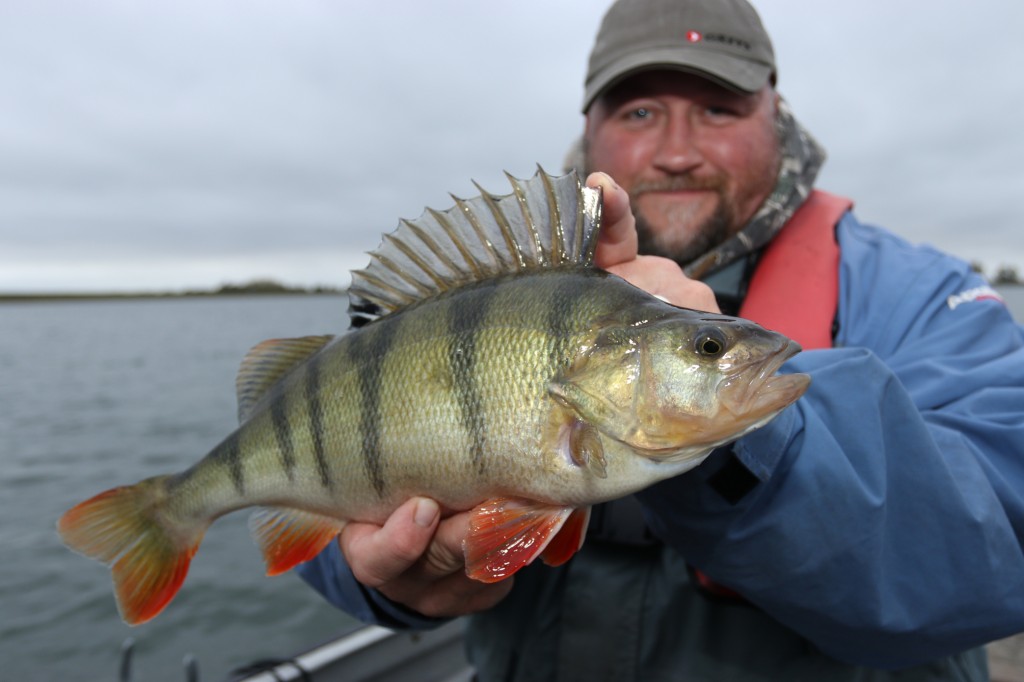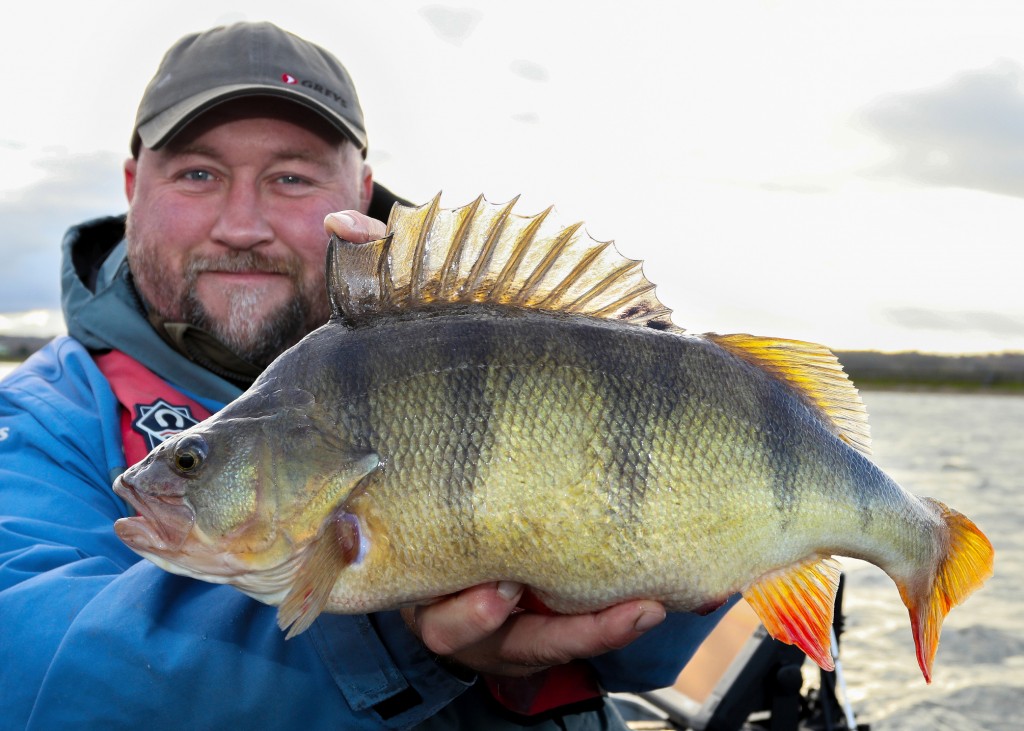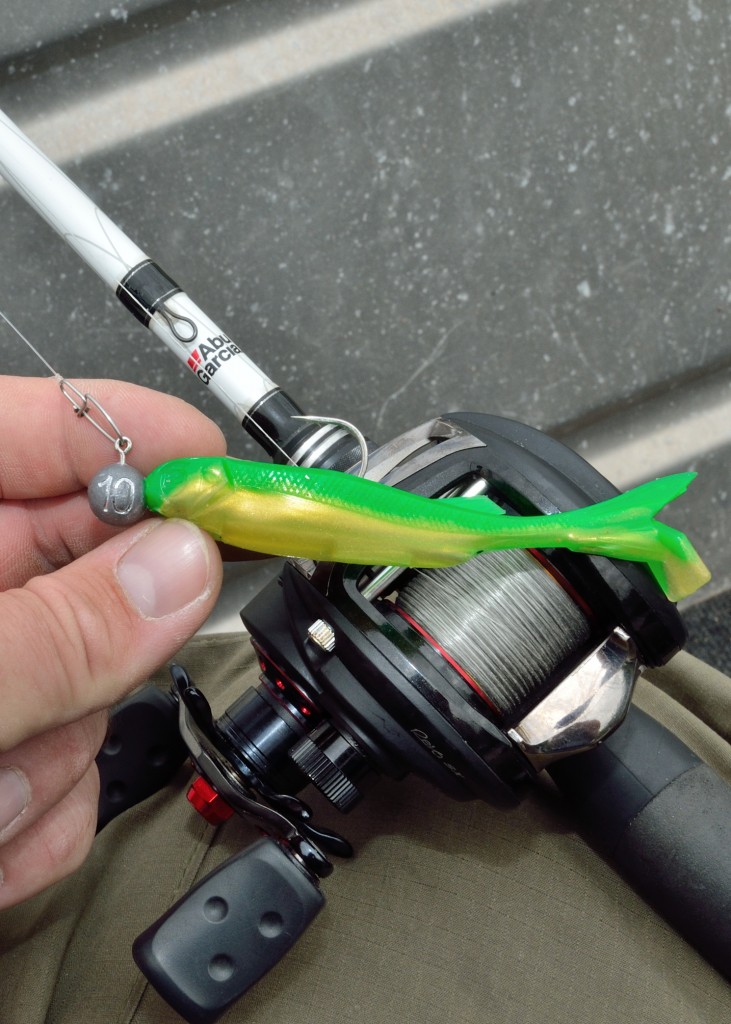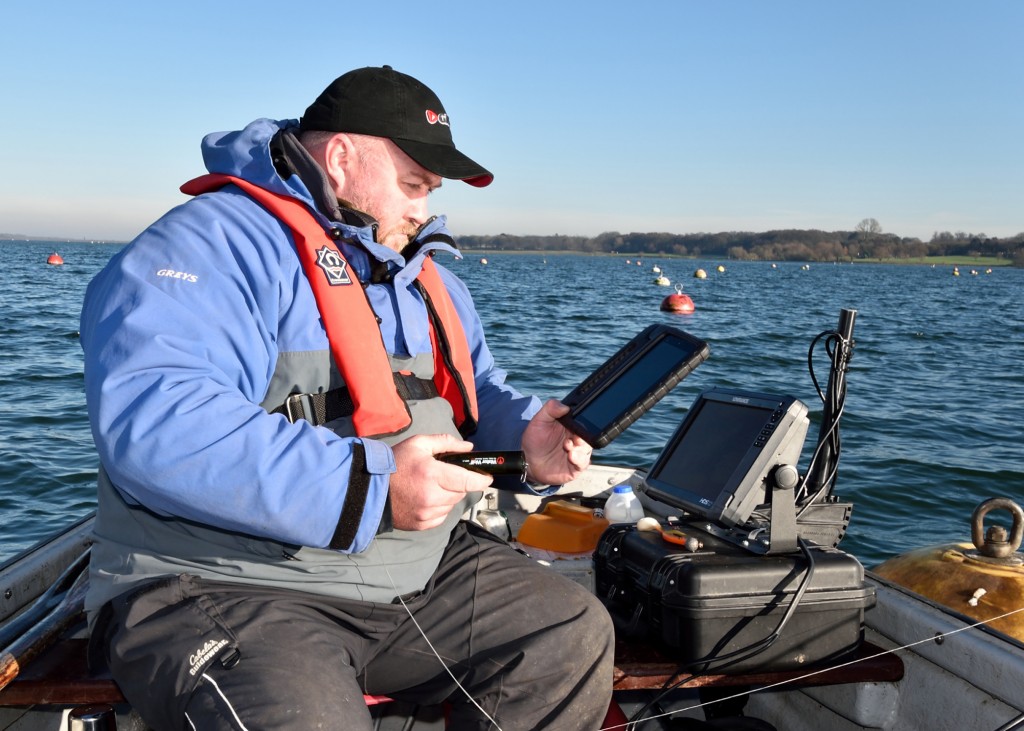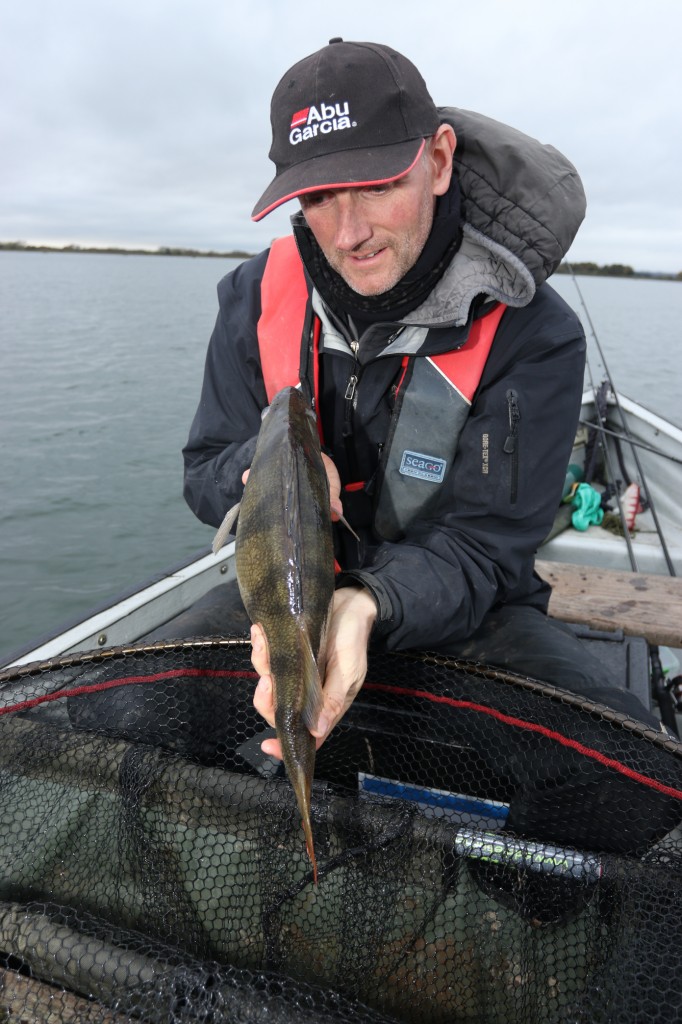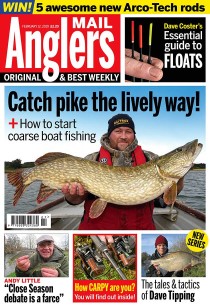… A Perch in a Pear Tree
Sorry for the bad joke its actually time for the Christmas 2017 blog!
Perch are a species that you don’t really associate with Christmas time and cold weather. I think this is because there are very few anglers that target them at this time of year, rather than they are any harder to catch. What does happen is that the shoals become a lot tighter, and you will find them closer to the bottom in deeper water than in the warmer months. Due to this they can be a lot harder to locate, which, on the big reservoirs that I like to target, can mean a lot of motoring about. In fact I spend probably a lot more time motoring than actually fishing, significantly more time. Last session I spent the best part an hour looking for fish – before even dropping a lure in. However, once found, Perch are generally easy to catch at this time of year, so you know straight away if you have found perch – as you will catch them on the first cast or drop down.
What I have also found at this time of year is just how mobile Perch shoals are. Often once you have found a shoal, by the time you have caught a fish and drifted off the shoal you will find it has dispersed, or moved off, when you come back to get back to the GPS marked spot. This is almost certainly a winter behaviour as I think you are chasing moving fish, as on most waters there isn’t the natural food to hold them in a spot – like in the warmer months when they might be feeding on fry or inverts in a particular area.
Perch at this time of year are clonking fish though, nearly at their maximum weight, and bristle with defiance when you catch them. The mistake that a lot of anglers make, however, is to fish too small, usually with drop-shotting tactics. It can be tempting to downsize, you will catch more perch doing this, but they will generally all be small. What you have to remember is at this time of year there really isn’t much food in the form of inverts for perch, and so, rather than feeding on small food items, they are tuned into taking larger fish baits. Which is why I think drop-shotting tactics often fall short, as most of the time it’s very small worm- type baits or v-tails that are often used. For the real big fish (and I’m talking 4lb+ fish) small jigs are a far better choice. In fact every perch over 4 ½ lbs I have caught has come to shad- style baits.
I like to use 9 – 12 cm lures such as Svartzonker McPerch, Berkley Cut Shad or Sebile AT Minnows and fish them on 10 – 15g 2/0 jigs depending on water depth. Perch seem to have a hierarchy when in a shoal, often with the largest or most dominant in the shoal being on top of the others i.e. higher up in the water column. You see this time and time again on sonar imagers, and one of my tactics when I find a shoal is to fish mid-water above them. This way the larger fish get to see the lure first, and have a greater chance of getting to it before their smaller brethren.
Bright lures are usually my first choice, with fire-tiger or a bright green being the ones that I will usually rig. Closely followed by blue and silver, or a white colour for deep water. The only time I won’t use a bright lure first off is on waters that have seen a bit of lure fishing pressure, as perch do wise up quite quickly.
A really good tactic is to “pendulum” your lure through the water column above the shoal. To do this cast over the shoal, let the lure drop to the right level then keep a tight line to the lure, and let it swing back to the boat. With the right lure and the correct weight of jig head the lure will work on an arc back to the boat, and takes nearly always come when the lure is slowing down as it gets to its zenith, and they can be savage – as a big Perch smashes into the lure and then powers down to the bottom.
One of the essential things to use for big perch on big waters is in my opinion an echo sounder or more importantly a side imager. Now I know some people think it’s cheating, but nearly all of my largest perch have been caught in conjunction with a sounder of some type. Perch show up really well on sounders as they tend to have a large gas bladder. They show up even better on side imagers because of their tendency to shoal up and hang just off bottom right in the beam angle. A shoal of big perch is almost un-mistakable even to the novice angler. On these big waters there could be thousands of acres without any perch, and if you are fishing blind it’s going to take you a long time to find these often highly mobile fish. This is why a sonar unit is essential gear for perching.
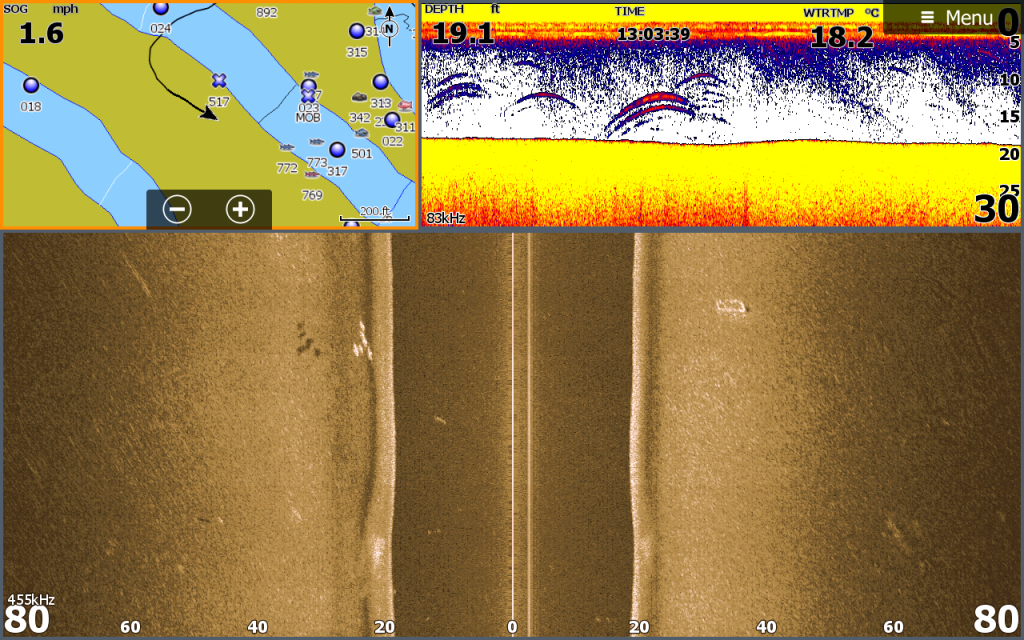
A group of big perch in the middle of nowhere
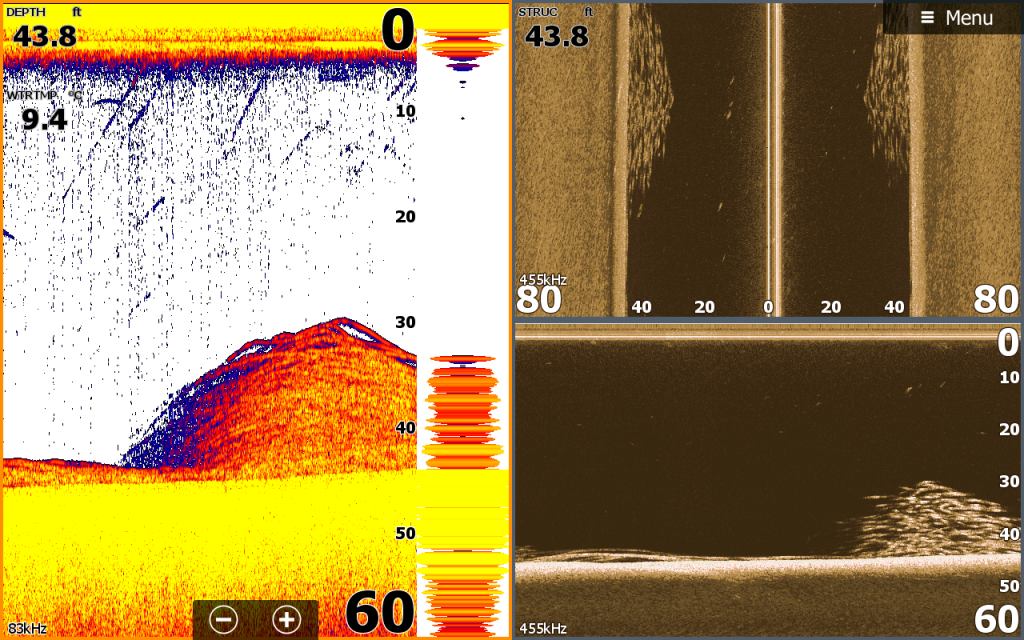
This is a big shoal of small perch – avoid like the plague unless you like wasping – Big perch aren’t with there smaller brethren.
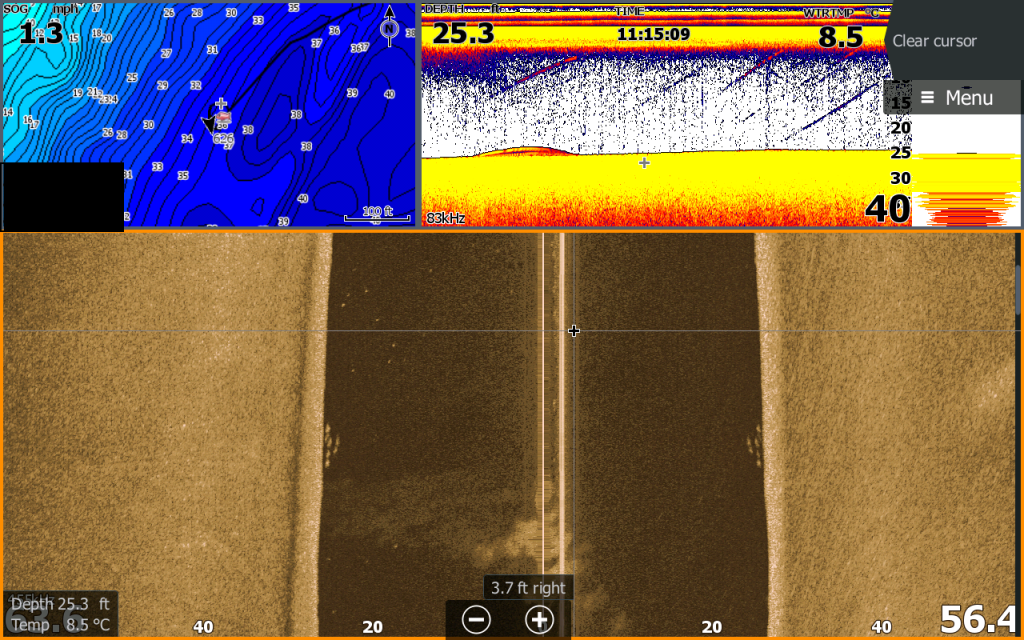
These fish were all over 4lbs note how tightly shoaled up they are.
Big perch are really stunning fish, probably more so as we don’t get to see them that often. They are a rare fish for three reasons, firstly there aren’t many of them and secondly they don’t last that long. Brig perch (4lb + fish) are usually at the top end of their life expectancy as they don’t live that long. Thirdly and most unfortunately they get illegally removed by anglers wanting to eat them! Therefore if you find a water with big perch you need to make the most of it as it is unlikely that they will be there the next season.
Surprisingly though, as I have found December to be a great month for perch, when we come into the New Year they tend to vanish on most lakes, until they turn up again in the spring for spawning. Where they go I don’t know, they must either go very tight to the bottom – so the shoals can’t be easily seen on the sounder, or they go a lot shallower, where again it would be hard to see them on the sonar. Though this isn’t usually a problem as January and February are probably my favourite time for pike fishing.
Happy Christmas and New Year
